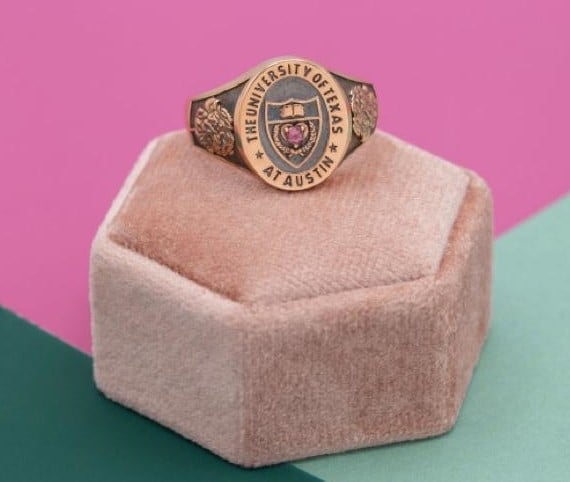Custom Class Rings: Buying Guide for 2025
4 Minute Read
A hallmark of the American military culture is a profound sense of loyalty to one's comrades and country. The students graduating from the United States Military Academy at West Point in 1835 felt this bond. This is where the tradition of the academic "class ring" began.
The idea of having each student own a graduation ring took hold at West Point Academy, and later students continued the tradition. Soon, news of this ritual spread to other academic institutions, and they quickly adopted the idea and began to offer their own students special class rings.
Today, many high schools, colleges, and universities give their students the opportunity to purchase a class ring. Not only do rings connect the wearer to their classmates and school, but they also serve as a symbol to others that the wearer completed their education at a particular institution. Some individuals take this very seriously and choose to wear their rings faithfully throughout their lives.
at CustomMade
The design of class rings today is a blend of standardized and customizable elements. While class rings are a relatively new tradition, the general style - that of a signet ring - is an ancient one.
Signet rings have been worn for thousands of years. The simple motif involves a band with a flat surface that faces outward. This face and the arms of the mounting on each side can be engraved and set with gemstones. This is the perfect design template for class rings.
at CustomMade
Now, almost 200 years after the first class rings were commissioned, several companies partner with schools to produce rings that feature distinctive design elements tailored for each institution. These standard features might be an image of a famous school building, a seal, or an animal mascot. Enough space is left alongside these standard elements for personal details about the wearer such as their initials and graduating year to be included. When all of these details come together, you get a fashionable jewelry item that is individualized and connects you to your alma mater.
at CustomMade
One of the customizable elements that many schools offer is the size of the class ring. This allows some to choose a bulky version and others to select a daintier style. Schools might include gemstones in their standardized designs while others may give you the option of adding gemstones for an additional cost.
at CustomMade
Also, many offer rings in different metals which allow for a wide range of prices. Typically, silver rings will be more affordable while platinum and gold options cost more.
at CustomMade
You might be asked to choose what karat gold you want your ring to be made of. The karat system refers to how pure the gold is. Gold that is pure is listed as 24K and it is the most expensive variation. However, gold is inherently a soft metal that can scratch and dent easily so you will very rarely see jewelry made with unalloyed 24K gold. Rather, to strengthen gold, it is combined with metals including nickel, copper, and silver. Common alloys that you will see class rings made of are 10K, 14K, and 18K. The lower the karat weight, the less gold is in the metal and the lower the cost.
at CustomMade
For many, 14K is the sweet spot of having enough gold that the jewelry shows that famous glow that gold is known for, but enough of the other metals to allow it to be worn daily without getting damaged. In the end, it all depends on how you want to wear your class ring.
at CustomMade
Emily Frontiere
Emily Frontiere is a GIA Graduate Gemologist. She is particularly experienced working with estate/antique jewelry.
Related Articles
What Is the Best Clarity for a 2 Carat Diamond?
The Best Clarity Grades for Radiant Cut Diamond Rings
Buying Guide for 2024: Diamond Bangle Bracelets
Diamond Eternity Rings: A Buying Guide
Latest Articles
800 Years of Mogok: A Celebration in Tenuous Times
What is the Average Gemstone Faceting Yield?
Pyroxmangite Value, Price, and Jewelry Information
How to Identify Emerald Simulants and Synthetics
Never Stop Learning
When you join the IGS community, you get trusted diamond & gemstone information when you need it.
Get Gemology Insights
Get started with the International Gem Society’s free guide to gemstone identification. Join our weekly newsletter & get a free copy of the Gem ID Checklist!
